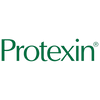Dental (tooth) problems are common in dogs. Dogs have 28 temporary teeth and 42 permanent (adult) teeth. Each tooth has 3 main parts: a hard outer shell visible above the gum (the crown); the pulp cavity containing nerves and blood supply, and one or more roots anchoring the tooth in the jaw bone. Dental problems affect one or more of these structures and may also involve adjacent gum or the ligaments securing the tooth in place.
Causes
Chipped, broken or worn teeth.
Retained (extra) teeth; dental overcrowding.
Tooth decay; tooth root abscess.
Dietary deficiencies; mineral imbalances.
Problems with development of the tooth in mum’s womb or shortly after birth: Toxins, illnesses, some medications.
Risk
Older dogs: Progressive tooth decay, poorer general health, weaker immune system.
Poor dental health care; eating a poor or unbalanced diet; being given inappropriate supplements.
Dogs who chew stones or bite kennel bars.
Dogs with dental overcrowding: Brachycephalic (short-faced) breeds.
Having certain chronic illnesses: chronic kidney disease, cancer, hyperparathyroidism.
Symptoms
The symptoms depend on the dental disorder and the part(s) of the tooth affected.
Visible abnormalities: broken or discoloured teeth; dental calculus (tartar/scale).
Pain: pawing or rubbing at the mouth; having difficulty eating; drooling saliva.
Changes in behaviour: Becoming irritable, head-shy.
Halitosis: smelly breath.
Diagnosis
Vets diagnose dental disorders based on your dog’s symptoms, a thorough physical exam and further tests.
Examination of the mouth under sedation: Loose teeth, exposed pulp cavity, gum recession and ‘pockets’ or gaps between the tooth root and its socket.
X-rays.
Treatment
No treatment: Discoloured teeth that aren't weakened; worn crowns where gradual wearing allows formation of a hard protective layer over the pulp cavity.
Prescription medicine: Antibiotics to settle infection; Anti Inflammatory pain relief.
An operation to remove a diseased or damaged tooth.
Specialist dental surgery: Dental fillings, dental crowns and repairs.
What to expect
Symptoms improve rapidly when treatment is straightforward and curative. For example, removing a broken tooth or one with a tooth root abscess. Where tooth disorders arise from overcrowding, developmental damage or chronic illness, incomplete cure and/or recurrence is more likely.
Prevention
It’s impossible to remove all risk of dental disorders in dogs. However, the risk can be minimised by addressing preventable causes.
Keep your dog’s mouth as clean and healthy as possible, with daily brushing and a complete balanced diet or dental health prescription diet.
Discourage your dog from chewing stones or other hard objects; give puppies chew toys suitable for their age and stage of tooth development.
Ensure your dog has regular vet health checks and identify other illnesses promptly.
Always talk to a vet if you notice anything wrong or different with your dog’s mouth.

















